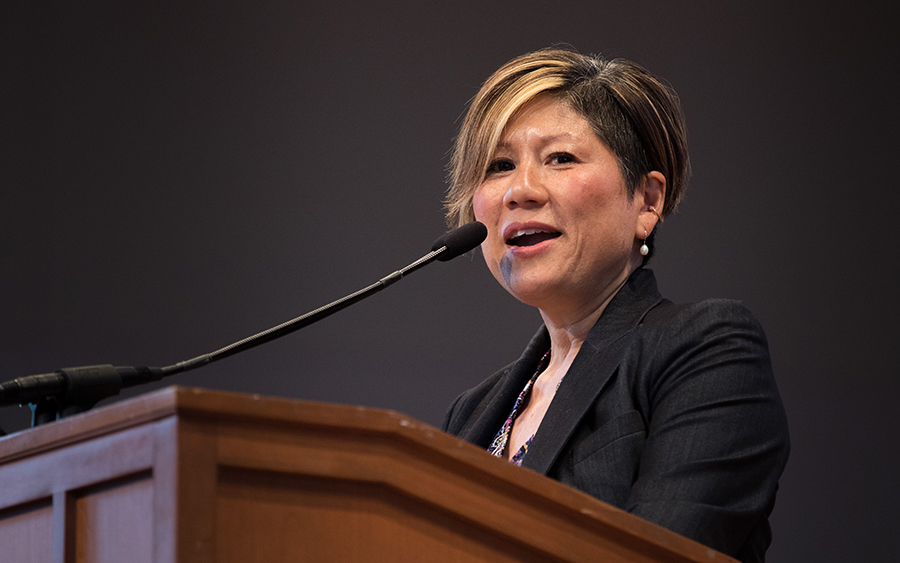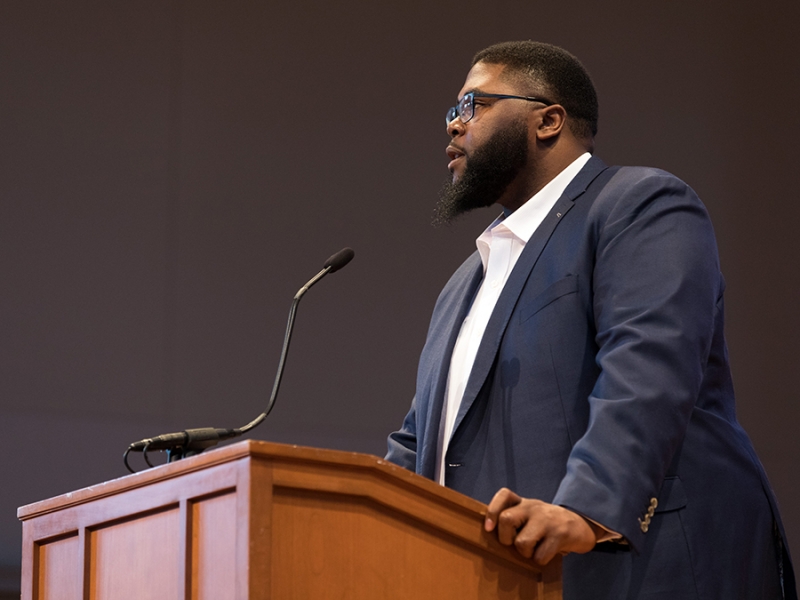Inclusion in Action

“Inclusion in Action: Listening and Organizing Across Difference,” held April 10, 2019, was created by and for Smith College. It was a day of engaged learning, connection and action; a convergence of knowledge and experience for the purpose of creating transformative change in our community. In addition to the programmatic offerings, feedback gathered during the day is being used to directly inform our long-range inclusion and equity planning.
Inclusion in Action Inaugural Program
Inclusion in Action kicked off with more than 60 programs, the majority of which were offered by Smith students, staff, faculty and alumnae. Special guests included Anthony Jack, author of The Privileged Poor: How Elite Colleges Are Failing Disadvantaged Students, and David Karp of the Project on Restorative Justice at Skidmore College. Closing our day of learning was queer Chicana performer Monica Palacios presenting “Browner Queerer Louder Prouder.” Dynamic sessions focused on helping our community face challenges together, recognize strengths, build connections, work in accountable solidarity, repair harm, dream big and take action. Programming included multiformat workshops, affinity group and intergroup dialogues, interactive panel presentations and roundtable discussions, performances, creative activities, skill-shares, reflection and healing spaces, and feedback sessions. See the Working Group Report page for more details on ongoing efforts emerging from the inaugural program.
WORKING GROUP REPORTWhy this? Why now?
“Inclusion in Action” was created to ensure the Smith community dedicated time to engage in thoughtful, proactive, visionary work around inclusion—work that confronts our challenges, deepens our relationships and uses our strengths to dismantle systems that injure and exclude. The events of July 31, 2018, deeply affected members of our community and revealed the difficult complexities of race, class, identity, power, safety and belonging that exist within everyday life at Smith. The idea for Inclusion in Action—a day focused on exploring these complexities and, together, creating change—was born of community conversation and planning following July 31.
Why a “day of learning”?
April 10 wasn’t a typical conference. It was a day of engaged learning, connection and planning. It was not a one-off event; it was an important step in empowering our community to work together to create a more inclusive and equitable Smith College.
What makes this day different than other inclusion and equity events?
Programming focused on the following community-generated learning themes: facing our challenges together, recognizing our strengths, building connections, working in accountable solidarity, repairing harm, dreaming big and taking action. Themes were generated by data collected during focus groups in January 2019 and refined by the program steering committee.
What will happen after April 10?
This day of learning was also a day of information gathering and planning. Every session generated ideas and strategies for making Smith a more just and inclusive community. There were feedback kiosks and listening sessions. Members of our program steering committee, the President’s Inclusion Council, and our partners at The Collaborations Group, Inc. then helped compile and organize this data into actionable steps and recommendations. In 2019–20, students, faculty and staff will be invited to convene within Action Working Groups and these groups will guide the implementation of our community’s recommendations.
Who participated?
All faculty, staff and students were expected to participate. Classes were cancelled on April 10, and most offices were closed.
Who was this day for?
This day of learning was for every member of the Smith community. The planning committee paid close attention to providing options specifically designed for faculty, students and staff, as well as various affinity groups. And there were sessions designed to bring all groups together to connect and collaborate. The goal was to offer something of interest for every stage and style of learning.
Who do I contact with more questions?
For questions, you can email inclusionconference@smith.edu.
Heard on Campus
“Colleges must move from access—admitting students—to inclusion: what happens to them on campus....Student experiences underscore that access and inclusion are two separate mandates.”

